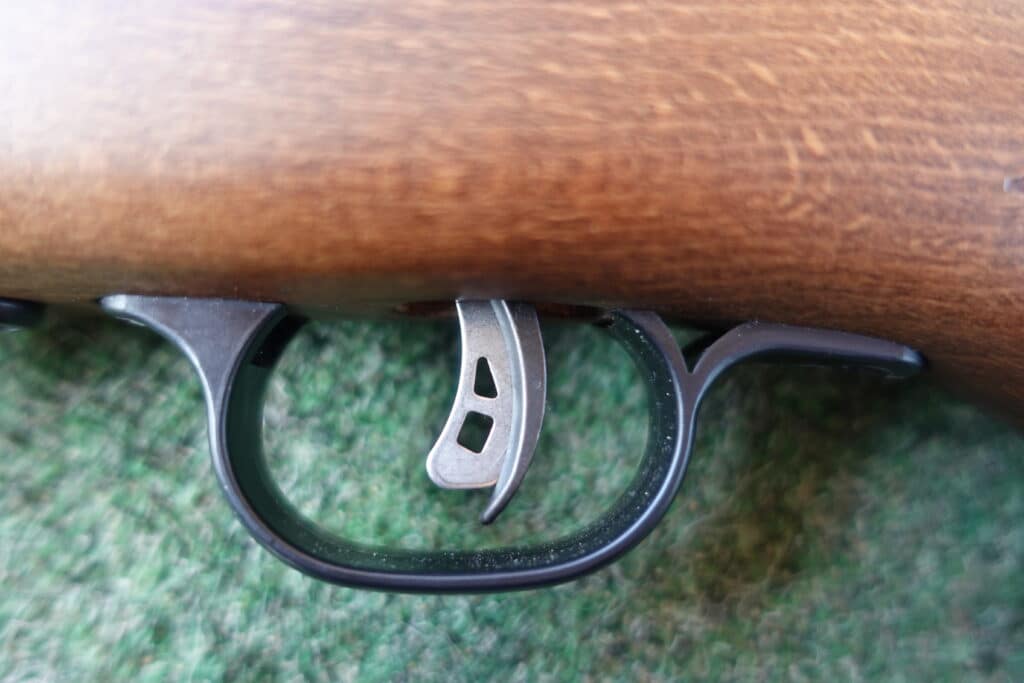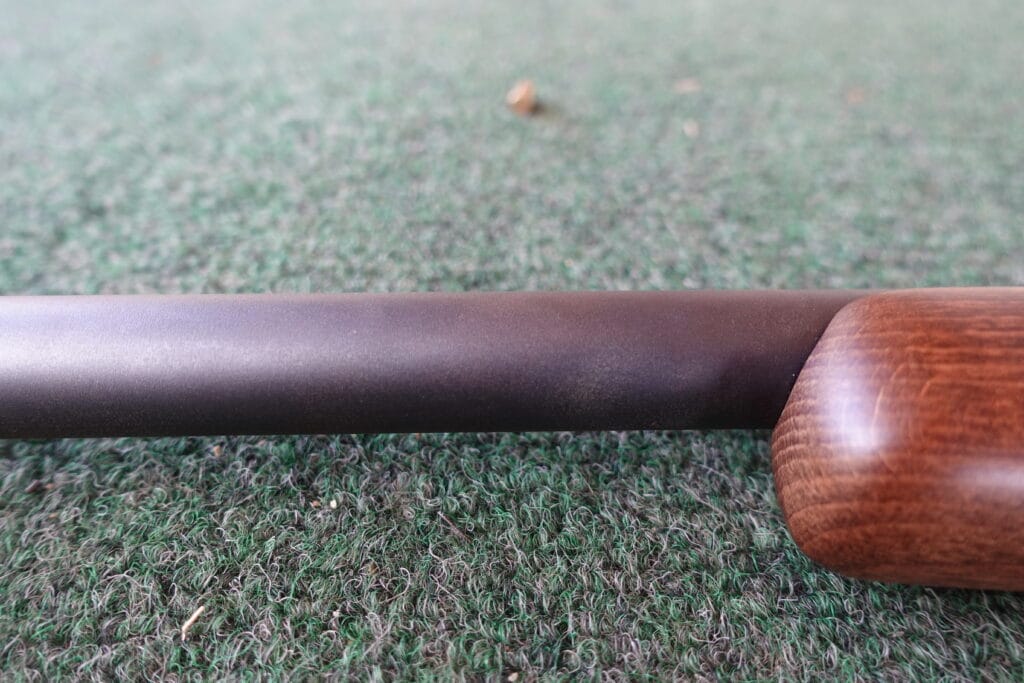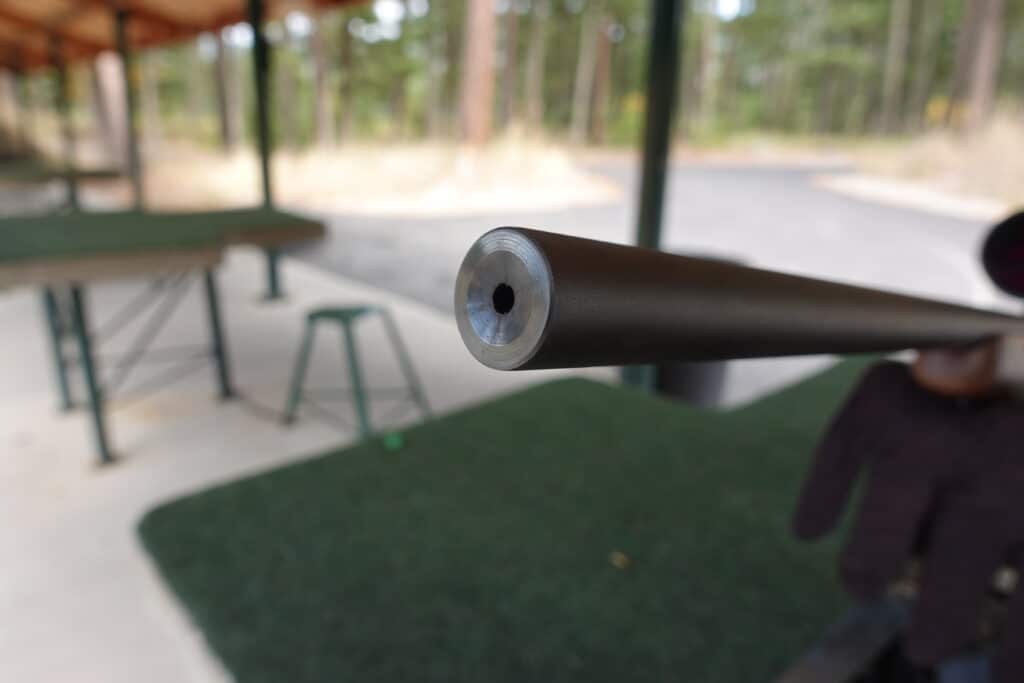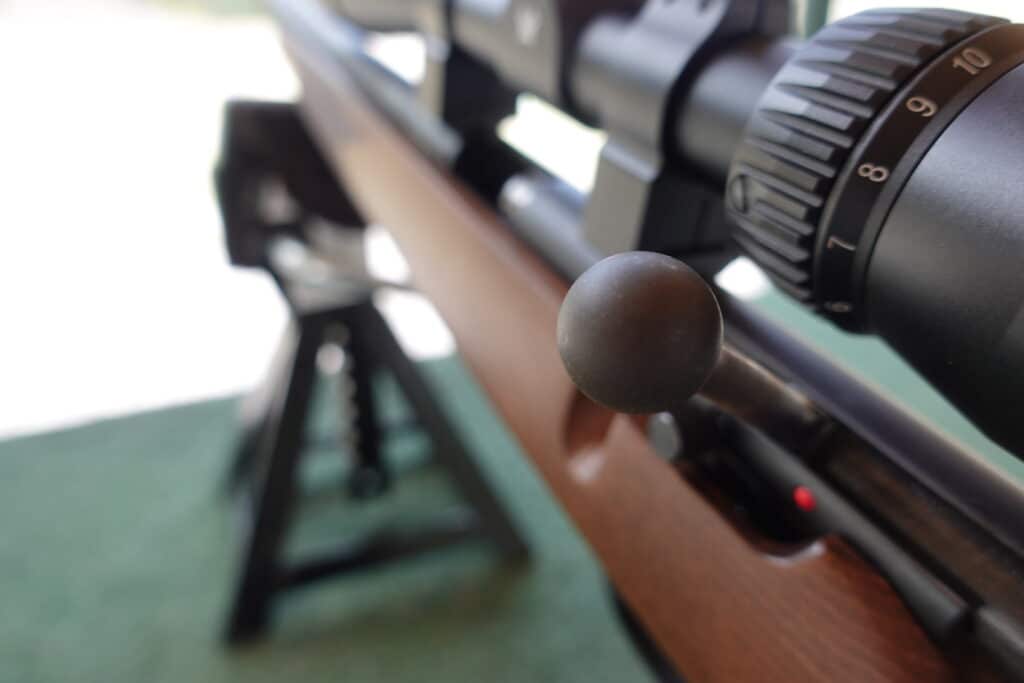Savage 93R17 Long Term Review: 17HMR on a Budget

About six months ago I came across a brand new Savage 93R17 left-handed model at a discount. Being a southpaw, the pickings for guns are much more limited compared to the rest of the population, and 17HMR was a caliber I was interested in learning more about, so I put my own money down, grabbed a scope, and set about putting this rifle through it’s paces.
The Savage 93R17 has proven to be an accurate, simple rifle that is best used as a small game rifle and as a training device for more expensive center fire hunting rifles.
This gun does have a couple of issues that need to be noted, but I’ll get to those in a minute. For now, let me start by explaining why I needed a 17 HMR and how the Savage fulfills these needs.
Uses for the 17 HMR
This is not going to be an in depth ballistics analysis, but we do need to talk about why someone would even consider buying a 17 HMR rifle. After all, there are certainly some drawbacks for this caliber.
The 17 HMR is more expensive than the 22L yet reloading it isn’t really worth it. It also drifts in wind quite a lot despite its speed, and ballistically it can’t compete with the 223 Rem or the 22-250, two excellent calibers for eliminating coyotes and the occasional hog.
So what is a 17 HMR good for?
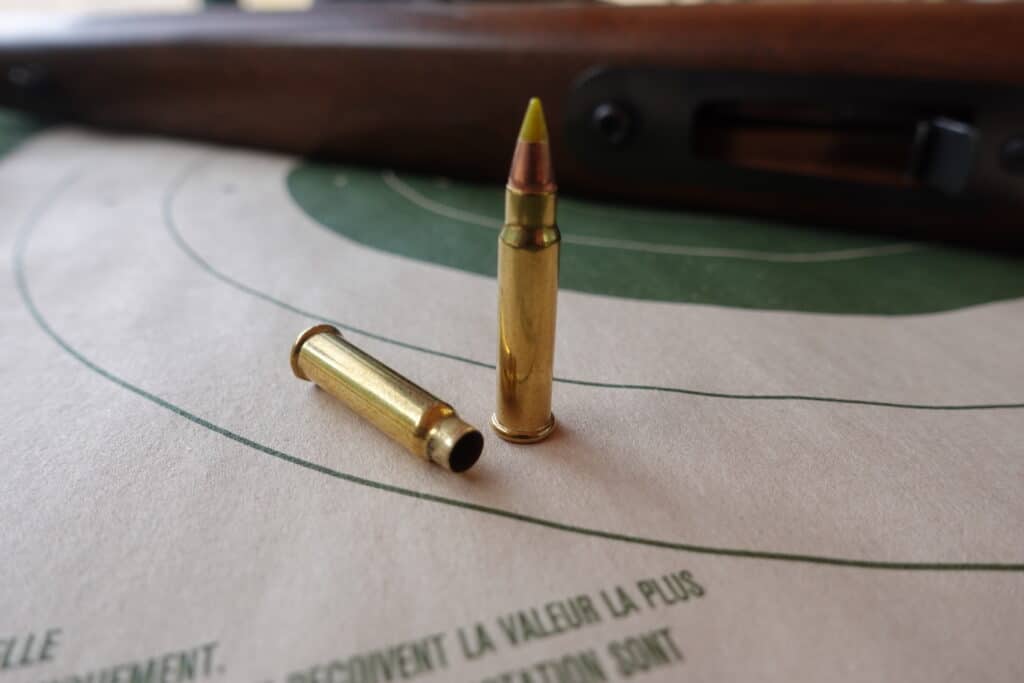
As a varmint cartridge for pest animals, the 17 HMR can’t be beat. Need to eliminate some squirrels, gophers, prairie dogs, skunks, rabbits, rats, foxes etc…? The 17 HMR can kill all these at 2-3x the effective range of the 22LR and with better ballistics than the 22WMR. Also, while the 22LR will drop 30+ inches at 200 yards, the 17 HMR will drop about 8-9 inches. Holdover is child’s play with a 17 HMR.
Another benefit that isn’t stated as often is that varmint bullets in the 17 HMR tend to fragment upon hitting something solid. That means a stray bullet isn’t going to punch through exterior walls or ricochet into the next section. A caliber that can eliminate nuisance animals without collateral damage is fantastic!
In addition to pests, I also wanted to have a rifle that I could practice with that better replicated big game hunting calibers than the 22LR. Considering hunting ammo for the 300 Win Mag is about $3.00 on average, the $0.30 per round of the 17 HMR saves a lot of practice costs while being a viable 200 yard cartridge for both hunting and target practice.
So it is for these two roles, pests and practice, that I decided to try out the Savage 93R17.

First Impressions
From the moment I picked this gun up off the rack at the local gun store, the Savage 93R17 felt really good in my hands. This particular model was the ‘GV’ which has a more traditional looking wooden stock with a raised comb. The metals were blued with a matte finish for a clean, classic look.
Like many modern rimfire rifles, the Savage uses a detachable 5 round box magazine that feeds into a simple, solid bolt action. Savage included an Accutrigger for the gun and a simple, two position safety switch located on the bolt side of the receiver. The action is mirrored on left handed versions which is nice because lefties usually have to compromise often for right-handed controls.
Despite being a rimfire, the 93R17 has a bit of heft to it. This is due to the wooden stock and the 21 inch, heavy contour barrel. The barrel specifically is a great feature because it is thick and can take a lot of shots before heating up, a perfect feature when trying to take out a field of rabbits.
There were three things I wish this gun had though. First, it would have been great if the barrel was threaded for a suppressor. While I don’t own one, shooting suppressed makes it easier to take out multiple pests in quick succession.
I think it would have been better to have a picatinny rail over the receiver instead of a two-piece weaver mount. Weaver’s are certainly usable, but the pic rail is the more flexible, modern option. Switching out the mounting rail isn’t a big trick though, so it’s not a deal breaker.
The plastic butt stock is very slippery. A rifle needs to have three contact points with the body to be accurate, the forestock, the grip, and the buttstock. If one or more of those contact points is shaped wrong or too slick, this affects accuracy. I get that the 93R17 has almost no recoil, but having a bit of rubber would eliminate slipping issues.
One other nitpick I had was the use of Phillips head screws in some areas. It doesn’t detract from the utility of the gun at all, and it’s more of a personal opinion, but Phillip’s screw heads look ugly to me.
Still, for a gun that cost less than $300 (MSRP is now $319 for the GV models) some corners had to be cut and, if given the choice between some annoying things that are easily changed and something that is critical like accuracy or safety, I’d clearly choose to keep the latter. Here are some specs you might be interested in knowing about this rifle:
| MSRP: | $319 | Model: | 93R17 GV |
| Action: | Bolt | Caliber: | 17 HMR |
| Finish: | Wood/Blued | Capacity: | 5 rounds |
| Barrel Length: | 21 inches | Magazine: | Detachable Box |
| Twist Rate: | 1 in 9 | Scope Mount: | Weaver |
| Length of Pull: | 13.75 inches | Weight: | 6 lbs |
| Overall Length: | 37.75 inches | Stock shape: | Varmint |
Range Tests
After purchasing the rifle, I went out and bought a scope that I thought would compliment the rifle and serve my needs. The scope I settled on was a Vortex Crossfire II 4-12×40 AO with a BDC reticle. This scope was about $189 in the store and turned out to be a perfect match for this rifle. The “AO” stands for “Adjustable Objective”, and allows the scope to focus from about 10 yards to infinity.
I did not like the rings I chose for this scope, but they worked and were also fairly cheap (about $30). There are certainly cheaper options on the market, but this turned out to be a great value.
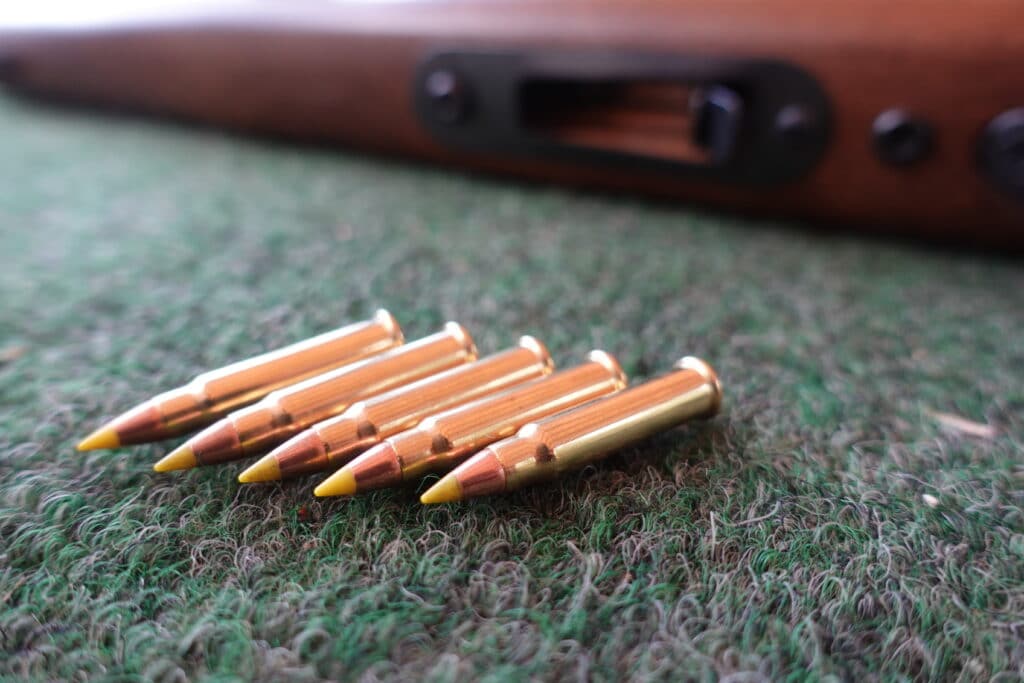
Consistency Test
After getting the scope zeroed to 100 yards, I proceeded with the first test, consistency. I made groups at 50, 100, and 150 yards. At each test, the bullets landed very close to each other. It was important to do this in as low a wind as possible to achieve a usable result. The good news is that there was no variance on where the bullets landed except for a bit of wind drift.
Speaking of wind drift, within 100 yards it is nearly unnoticeable if the wind is less than 10mph. However, due to the design of the 17 HMR bullets, past 100 yards wind drift becomes an issue quickly. I found that by 200 yards group sizes were opening up significantly even in a light wind.
Group Size Test
After seeing the encouraging results, I then wanted to make a few groups at 100 yards and measure their spread. I made five, 5-shot groups on paper then measured and recorded each. The smallest size was 0.57 inches, 0.48 inches excluding the ‘flyer’. The largest size was 1.08 inches, or 0.95 inches excluding the ‘flyer’. All five groups averaged out to 0.82 inches, with 0.73 inches excluding a single ‘flyer’.
| 100 Yards | Smallest (inches) | Largest (inches) | Average (inches) |
| 5/5 Group | 0.57 | 1.08 | 0.82 |
| 4/5 Group | 0.48 | 0.95 | 0.73 |
Why exclude the flyers? When shooting at live targets like small game animals, hunters have to know what their probability is at different ranges. If a hunter has a 10% hit rate at 500 yards, odds are the hunter shouldn’t take that shot. But if the same hunter has an 80% hit rate at 300 yards, odds are good the hunter will kill the animal on the first hit.
We can extrapolate these numbers based on range and target size. Assuming that a hunter is using the same rest with the same stability, the variance in group size will only change due to the action of wind. This test was done in a light wind that I’d estimate to be about 5 mph. Using those numbers, here are the maximum acceptable range for different creatures at different wind speeds:
| Animal (cranium size) | 5 mph wind | 10 mph wind | 15 mph wind |
| Red Squirrel (0.7 in) | 86 yds | 43 yds | 29 yds |
| Prairie Dog (1.1 in) | 108 yds | 54 yds | 36 yds |
| Grey Squirrel (1.3 in) | 117 yds | 59 yds | 39 yds |
| Skunk (1.6 in) | 130 yds | 65 yds | 43 yds |
| Jackrabbit (1.9 in) | 141 yds | 70 yds | 47 yds |
| Raccoon (2.2 in) | 152 yds | 76 yds | 51 yds |
| Red Fox (3.0 in) | 178 yds | 89 yds | 59 yds |
I calculated these numbers by dividing cranium size by my largest group diameter with an 80% hit rate (0.95 inches at 100 yards). The square root of this result estimates the affect of wind at different yardages (bullets travel on an exponential path in side wind). This final result is the “range factor” that can be multiplied by my base range (100 yds), giving us the maximum usable range for each animal.
To adjust for different wind speeds, yardages are divided one half if the wind is doubled (10 mph) and one third if wind is tripled (15 mph). This table should give us a pretty good idea of what this gun is capable of in different conditions assuming a steady rest.
Assuming calm conditions, the Savage 93R17 is theoretically capable of making a brain shot on a fox at 180 yards. My test groups out to 200 yards seem to support this as I was able to make approximately a 4 inch group while guessing my hold over.
The “Quarter” Test

To test the practicality of these estimates, I decided to try one more range test. I took a U.S. quarter and stuck it to the front of a target at 100 yards. According to the table above, this should be very close to replicating the brain shot on a prairie dog (1.1 inch target at 108 yards vs 0.95 inch target at 100 yards).
The results for this were pleasing. I hit 3 quarters with five shots. My two misses were by fractions of an inch and likely still would have been lethal on a prairie dog. Normally, this would be considered a trick shot, but with the Savage 93R17, it was pretty darn easy!
This final test I think pretty much proved this gun to be a “sub-MOA” rifle both on paper and in practical use. I’m sure that with a proper bi-pod and a few modifications (like a rubber butt pad), group sizes could be cut down even further Considering this rifle is cheaper than the Savage Axis, the results are down right spectacular!
Anyways, after emptying my pockets of quarters I decided to start ringing steel. While I couldn’t quite reach the 300 yard plates, I managed to hit the 200 yard plates more times than not and I didn’t even have to try with the 100 yard plates.
Field Tests
After establishing that the 93R17 makes an excellent range rifle, especially for practicing holding for wind and elevation, the next set of tests I wanted to put the gun through would be in the field. The results for this were a bit mixed, but still positive overall. However, the varied environments showed some weaknesses to the rifle and the way I set up the rifle.
First, I went out to hunt prairie dogs, pocket gophers, and the like in a variety of weather conditions. Admittedly, I’m a piss poor rodent hunter, but the few I managed to pick off were easy kills from the accuracy of the Savage. The dusty, dry air from mid-summer in Montana did not affect the rifle one bit. In fact, I had yet to experience a jam, misfire, or other shooting-related issue.
Going out to the field several times meant I could test out how well the rifle holds up to being hauled around. In the several weekends I had the Savage in the back of my suburban getting moved around (bumped around would be more accurate), I didn’t notice any significant change in zero nor did I see any scratching from the finish.
There were a couple of nick marks from me accidentally hitting the gun against some concrete, but aside from that the stock has remained remarkably clean and has proven to be durable. However, my next field test showed a flaw that, although not a deal breaker, is something to be aware of.
I went to Minnesota to help my father fix some things on his cabin. While I was there, we had a squirrel infestation that needed to be eliminated before fall turned too cold in Northern Minnesota. Nesting squirrels can cause significant damage to structures if allowed to take over an old, wooden cabin. If noting else, their nests are a fire danger and attract parasites.
So, I set about eliminating squirrels that were clearly making the underside of the cabin their home. In all I managed to get six of the critters, four of them with the 17 HMR and two with my semi-auto 22LR. I didn’t have a higher body count because it wasn’t necessary, I was only looking to kill the animals invading the cabin, not wipe out the woods.
These were little red squirrels, so they were fast, unpredictable, and only stood still for a few seconds at a time. At close range, the Savage was next to useless because of the scope. 4x was simply too much when the dang critters were only a few yards away. I did manage to hit them when the squirrels were foraging in the undergrowth 20-30 yards away, but even then the scope was not ideal.
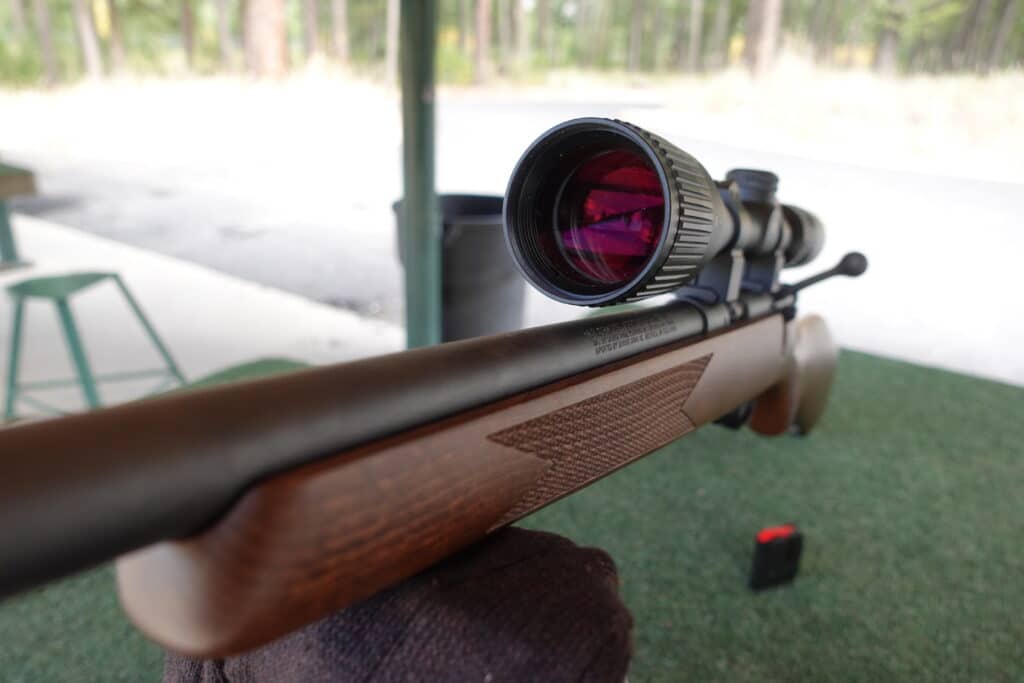
Savage 93R17 Problems
This reveals an flaw inherent to the philosophy behind the Savage 93R17. It’s designed to take shots from 50-200 yards against relatively slow targets. The bolt action design and lack of iron sights mean that the scope either has to be built for longer ranges or shorter ranges. A 1x variable scope would be handy in the forest, but in open country the 6 or 8 power maximum from such scopes isn’t enough.
No Iron Sights
The 4-12x range is way too much for the trees, but just right on open ground. If the 93R17 had iron sights like most rimfire rifles, I could have detached the scope and used the open sights. This, to me, is one issue I wish Savage would address, even if it raises the cost of the gun a bit.
Rust
The more humid environment exposed a second issue, this one being far more serious. Rust. Understandably, the 93R17 is a cheap gun, so corners need to be cut. However, cutting corners on the metal finish can lead to issues. In my case, the wet air of Minnesota quickly facilitated the formation of rust.
After two weeks in Minnesota, the gun had rust on all the matte-finished metal parts of the gun. This included the barrel, receiver, and parts of the bolt. From what I can tell, the rust is not affecting the operation of the gun one bit, but it looks very ugly and is something that isn’t unique to this particular gun.
The Savage Axis Jim reviewed a while back also developed rust. Clearly then Savage needs to address this particular problem for their cheaper guns. Both might have been cheap, but in every other area they are pretty solid performers. The only recommendation I can make is that if anyone plans to purchase a Savage 93R17, go for the stainless options. Right-handed people only need to spend an extra $50.
Weak Metal Finish
On top of that, I noticed the metal finish can get market up pretty easily. While a small dent in the stock doesn’t cause any issues, every mark exposing fresh metal is one more area for rust to form. The solution to light rusting is to keep the gun well oiled and away from humidity, which is precisely what I’ve done. So far, that seems to have stopped the rust!
Potential Modifications
One thing that is really fun about firearms is the ability to modify guns to meet certain requirements. The Savage 93R17 does a lot of things right, but there are some things I would like to change on my gun to make it more usable. In the six months I’ve had the gun, I’ve been writing down these modifications as they come to me. Here is the running list as it currently stands:
Modifications
- Picatinny rail over receiver
- Threaded muzzle for devices
- Rubber butt pad on stock
- Iron sights installed on barrel
- Metal trigger guard
- Larger bolt handle
- Proper stock bedding
- Secondary rail mount for light
- Quick-detach scope mounts
- Stronger, rust-proof metal finish (cerakote?)
I think these modifications would address whatever shortcomings this rifle has and would add some versatility to the gun such as being able to quickly dispatch raccoons rummaging through the garbage at night or a problem coyote going for chickens. There’s also a shopping list for useful accessories once these modifications have been made:
Accessory Shopping List
- Adjustable shoulder strap
- Detachable bi-pods (short for prone shooting, tall for sitting)
- 17/22 cal suppressor
- Muzzle Flash hider
- Pistol Flashlight
Fortunately, this list is pretty short but I think that after getting all of these for the rifle, the Savage 93R17 will have reached its maximum potential for versatility.
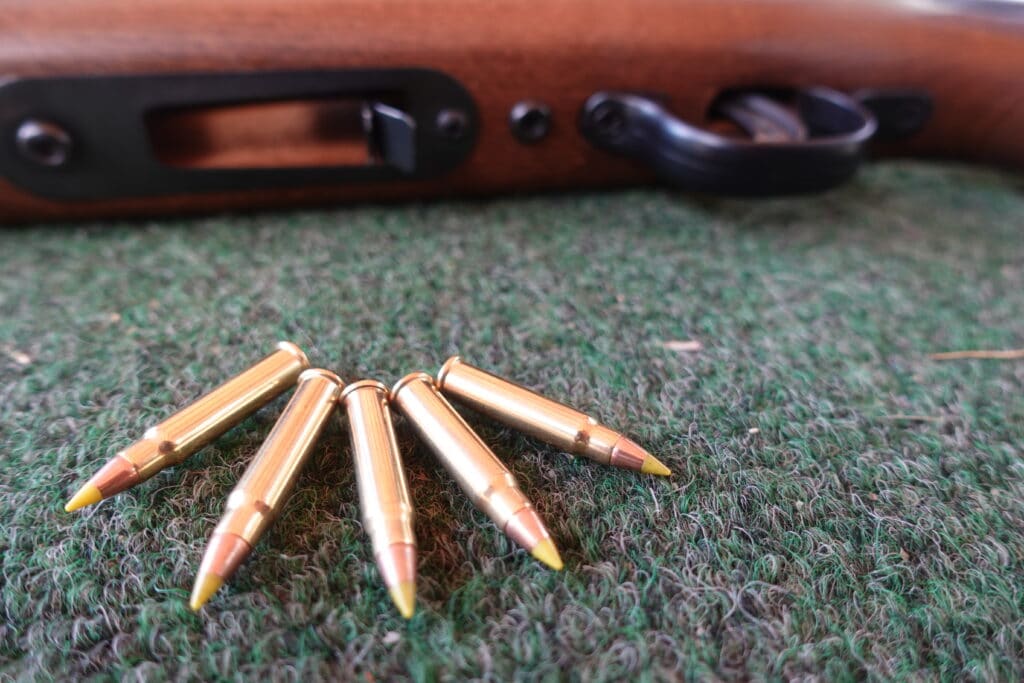
Final Remarks
So far in this review, I’ve gone over the reasoning for why this gun exists, it’s purpose and uses, first impressions of the gun, range and field tests, issues, and modifications I’d like to make. All that’s left then is to give some final words for the Savage 93R17!
Overall, I really like this gun!
This rifle represents and fantastic value. The street price is roughly $280 for this gun, and in some areas (like the metal finish) the cheapness shows. But in other areas, such as its accuracy and the fact that I haven’t had a single jam or light primer strike, the verdict is clear, this is a usable, cheap rifle that is able to do a lot of precision work right out of the box.
While it’s just my opinion, in the last six months I’ve come to like this gun enough that I’m willing to invest money into it, improving its weaknesses and making it more suitable for my needs. Finding some iron sights will be interesting, and getting a better finish will take some research, but I’m confident the end result more than justifies the cost.
However, if the 17 HMR doesn’t match your needs or if you’re the type who wants a gun that you can take to hell and back, then the Savage 93R17 really isn’t for you. Ammo gets expensive for plinking, and there isn’t enough power for animals like hogs, coyotes or deer. On top of that, humid climates will affect the finish of the metal.
I suggest anyone considering this gun to think about what uses you would have for a 17 HMR. That should tell you right away if this gun is for you, or if your money is better spent elsewhere. I can say that the Savage 93R17 meets my needs as a varmint gun and for practicing at the range, and because of that I’ll be keeping this rifle for quite some time.




